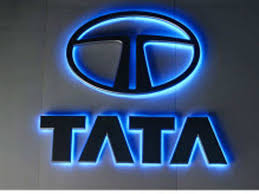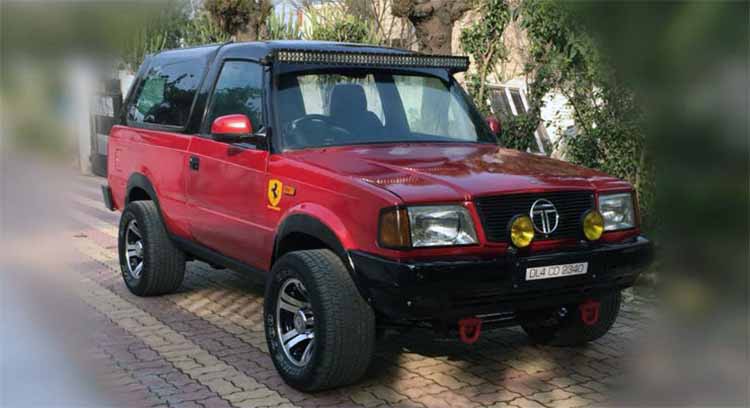TATA'S FORGOTTEN CARS:
Tata Motors had made name for itself internationally and has proved itself many times in various fields. Tata Motors is the largest homegrown automotive brand to date. its origin dates back to the 1950s and has been in the passenger vehicles since 1988.

TATA SIERRA | THE LEGEND
Tata had launched a lot of cars in almost every segment of the Indian car market. it gave us almost all. Tata gave us Tata Sierra, the legendry beast. It was the first 3-Door Sub-Compact SUV, launched back in the 1990s. The SUV was ahead of its time as it came equipped with a four-wheel-drive option, power windows glass panel, and much more. It came with a 2.0L Peugeot 4-cylinder Diesel engine which produced 63bhp of power. This beast was not able to perform better in terms of sale as the segment was new in India and the customers were more inclined towards the lower price cars at that time.
 |
| Old Tata Sierra |
 |
| New Tata Sierra EV |
TATA ESTATE | AN ATTEMPT
Tata Estate was a Station Wagon car produced by Indian car manufacturer Tata Motors. Estate was made by getting inspired by Mercedes Station Wagon. It was made between 1992-2000. It was the first passenger vehicle of Tata, as it was a major player in making heavy vehicles.

The Estate came with a 1.9 litre of Diesel Peugeot engine, which produced 67 bhp of power and 118 Nm of peak torque. it came with a 5-speed manual transmission. Back in 1992 when Tata Estate was launched. There were Hindustan Motors Ambassador and Premier Padmini Safari already, and achieved success as a sedan in the Indian market. So they definitely seemed to be the underdog. Thus, it did not do well.

TATA SAFARI PETROL | DIESEL WAS CHEAPER 
Everyone remembers this legend but, only some know that there was an option available for petrol at that time 20 years back. It came with a 2.0-litre petrol engine that produced 135bhp and 87ps of power. It was a powerful car but didn't claim good mileage due to the bigger petrol engine, it was disliked by Indian customers and so it is existing in this list.
TATA SAFARI DICOR 3.0 | A PERFECT FIT FOR RUGGED INDIAN ROADS
Tata motors had worked on safari petrol and launched Tata Safari Dicor 3.0 just within a year and now was increasing its sales figure for a passenger vehicle. Safari was a tough competitor of Mitsubishi Pajero, which provided almost the same power at a lower cost.
Common People were looking Safari as a rugged, rough use car with a 3.0litre 4-cylinder diesel engine which produced 116PS of power @ 3000 rpm and 300Nm of torque, which was good enough to give a satisfying performance to the Driver.
While talking about the interior. The cabin space was huge and comfortable enough for a long trip with all 7 seats full.
Tata Mobile
The Tata mobile was the primary small vehicle made by Tata and it later became the idea of other vehicles just like the Sierra and therefore the Estate. The pickup was aimed for private use but the concept was way too early for India.
What happened was that folks who wanted to haul goods bought Tata 407s and people who wanted a pick-up truck for infrequent use hired one. Therefore, Tata Mobile was a sales failure. it had been powered by an equivalent 2-liter, 68 Bhp non-turbo diesel that was also found on the Estate and therefore the early Sierras.
Tata Indigo Marina
Despite the very fact that the Estate failed miserably within the market, Tata again tried to experiment with the concept of station wagons several years later. It launched the Indigo Marina, which was supported an elongated Indica platform and was a spacious beach wagon . Even Ratan Tata used one to move his dogs. However, the Indigo Marina ended up with just about an equivalent fate because the Estate.
 |
TATA INDIGO MARINA
|
The company was confident about the beach wagon segment albeit facing reality after the Estate. the favored Indigo was given a steroid and Marina was born. The car wasn't ready to begin thanks to the stigma of the wagon segment and its failure. it had been discontinued soon.
Tata Spacio
A lot of individuals get confused between the Spacio and therefore the Tata Sumo Spacio but both are different vehicles. The Spacio may be a soft-top version of the regular Sumo. it had been meant to be nation carrier, so it didn’t have any doors, allowing better accessibility. It borrowed its engine from the Tata 407 DI pickup as compared to the Sumo’s 2.0-litre engine. The 407 DI engine produced 70 Bhp, which was quite enough for the vehicle. Tata pulled the plugs on this vehicle abruptly, which probably is that the reason why is it not seen on the roads.
Tata Indica LX
The Tata Indica was India’s first fully indigenous sedan and it came with class-leading features. Sometime later though, Tata launched another variant of the Indica in the form of the Indigo XL. It was built on the Indica platform and offered more rear cabin space than a Honda Accord. Massive legroom was its forte and the cab segment even bought a few cars. However, personal car buyers were not impressed with the sedan which resulted in poor sales.
Tata Bolt
The Bolt was a refreshed version of the Indica Vista and was launched in 2015. It featured an updated body design along side new headlamps and taillights . Also updated were the interiors of the hatchback and were way better than that of the Vista’s.
the general quality of the car was improved along side the Bolt gaining ABS and Airbags. Despite all the aesthetic and other improvements, the Bolt couldn't bring enough customers to the dealerships. The car remains on sale but has been forgotten by people. it's a rare sight on roads too which further diminishes its existence.
Tata Indigo Manza
The Indigo Manza was launched in 2009 because the newer version of the Indigo sedan. The Manza was a intensify from the Indigo altogether aspects and was meant to be a rival for the likes of the Hyundai Verna, Nissan Sunny, and therefore the Honda City among others but at a way lower cost tag. it had been offered in both petrol and diesel engines, one among which was the Fiat Multijet diesel that churned out 90 Bhp of power and 200 Nm of Torque. it had been discontinued afterward though since private ownership remained low throughout its lifetime.
Tata Nano | Dream Project of Ratan Tata | People's Car | Most Affordable Car in the world till date |
What went wrong and what lessons are often learnt?
First, several Nano cars caught fire within the first two years. Tata Motors rectified the glitches and offered an extended warranty for both new and existing cars but the reputational damage was done. Second, there was a production delay (having to shift from Singur, West Bengal to Sanand, Gujarat) of 18 months which was acutely felt due to high expectations created by the hype over the car. Third, it had been low on riding comfort, lacking the steadiness that greater weight gives.
Fourth, the most important initial point – the most cost effective car you'll get – boomeranged. Value-conscious Indians, particularly those that would really like to modify from a scooter to a car, should have embraced it with open arms but didn’t. This reaffirmed the widely-held notion that a car does quite taking you from point A to point B. it's an aspirational symbol. Prospective buyers felt that to be seen owning the “cheapest” was to accumulate a lowly social station . rather than being a people’s car it actually had a distinct segment appeal among the fashionable for being cute and almost funky, just like the now-dead Matiz of Daewoo.
Finally, Nano was never the “one lakh” car, as was originally indicated by Ratan Tata whose brainchild it had been . Over time the gap between the Nano and therefore the cheapest car within the market narrowed. Right now, rock bottom on-the-road price of a Nano in Delhi is quoted at Rs 2.59 lakh, compared to the most cost effective Alto 800 going at Rs 2.88 lakh.
The idea behind the Tata Nano was deep-rooted within the principles on which the Tata Group functions. For them, business isn't just a way to an end. The Tatas are very invested within the progress and development of the Indian economy. Much of their efforts and business plans have social connotations attached to them.
The Nano was no different. Ratan Tata had observed the plight of the lower bourgeoisie Indian for years. He had observed how normal people pass by conveyance . Come wind, come rain, come scorching sun, the lower-middle-class Indian has got to resort to local trains and buses to urge to figure . For some time past , a private vehicle was considered to be an immense luxury. At best, all normal people could afford was a two-wheeler, nothing else.
Mediocre Marketing – Marketing wasn't Tata’s cup of tea some time past and therefore the marketing wasn't up to the mark for this car. A car priced this low needs adequate marketing to hide costs, and, well, advertise the car.
Tata went full beans on their marketing initiatives but they were too aggressive on using the term ‘cheapest’. Unfortunately, the car landed upon us once we were using the word ‘cheap’ as a metaphor to criticise the bad quality of something. This created a stigma that caused the general public to perceive the car as inferior, which it certainly was not!
 |
| This Tata Nano Revs Way Above 10,000rpm |























Comments
Post a Comment